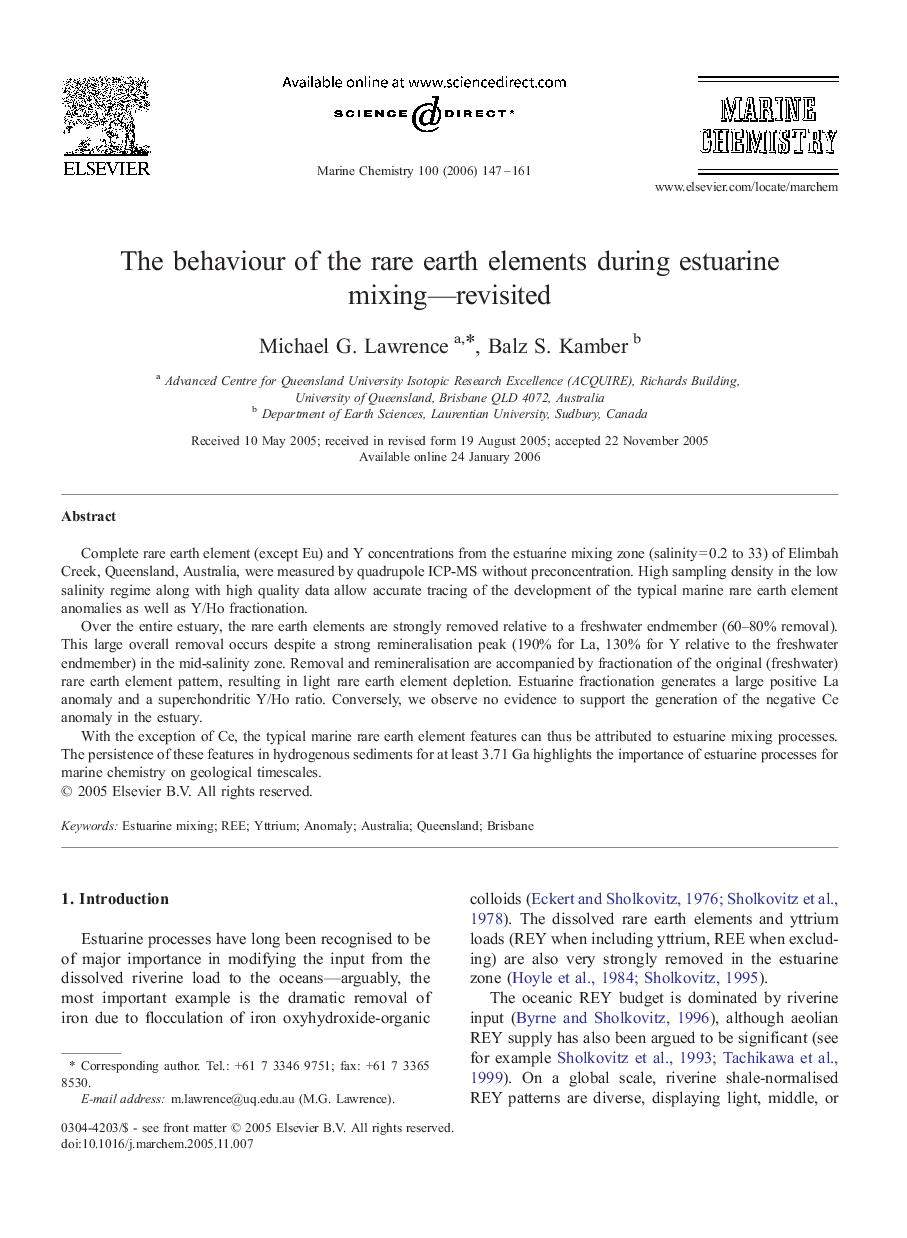| Article ID | Journal | Published Year | Pages | File Type |
|---|---|---|---|---|
| 1263596 | Marine Chemistry | 2006 | 15 Pages |
Complete rare earth element (except Eu) and Y concentrations from the estuarine mixing zone (salinity = 0.2 to 33) of Elimbah Creek, Queensland, Australia, were measured by quadrupole ICP-MS without preconcentration. High sampling density in the low salinity regime along with high quality data allow accurate tracing of the development of the typical marine rare earth element anomalies as well as Y/Ho fractionation.Over the entire estuary, the rare earth elements are strongly removed relative to a freshwater endmember (60–80% removal). This large overall removal occurs despite a strong remineralisation peak (190% for La, 130% for Y relative to the freshwater endmember) in the mid-salinity zone. Removal and remineralisation are accompanied by fractionation of the original (freshwater) rare earth element pattern, resulting in light rare earth element depletion. Estuarine fractionation generates a large positive La anomaly and a superchondritic Y/Ho ratio. Conversely, we observe no evidence to support the generation of the negative Ce anomaly in the estuary.With the exception of Ce, the typical marine rare earth element features can thus be attributed to estuarine mixing processes. The persistence of these features in hydrogenous sediments for at least 3.71 Ga highlights the importance of estuarine processes for marine chemistry on geological timescales.
